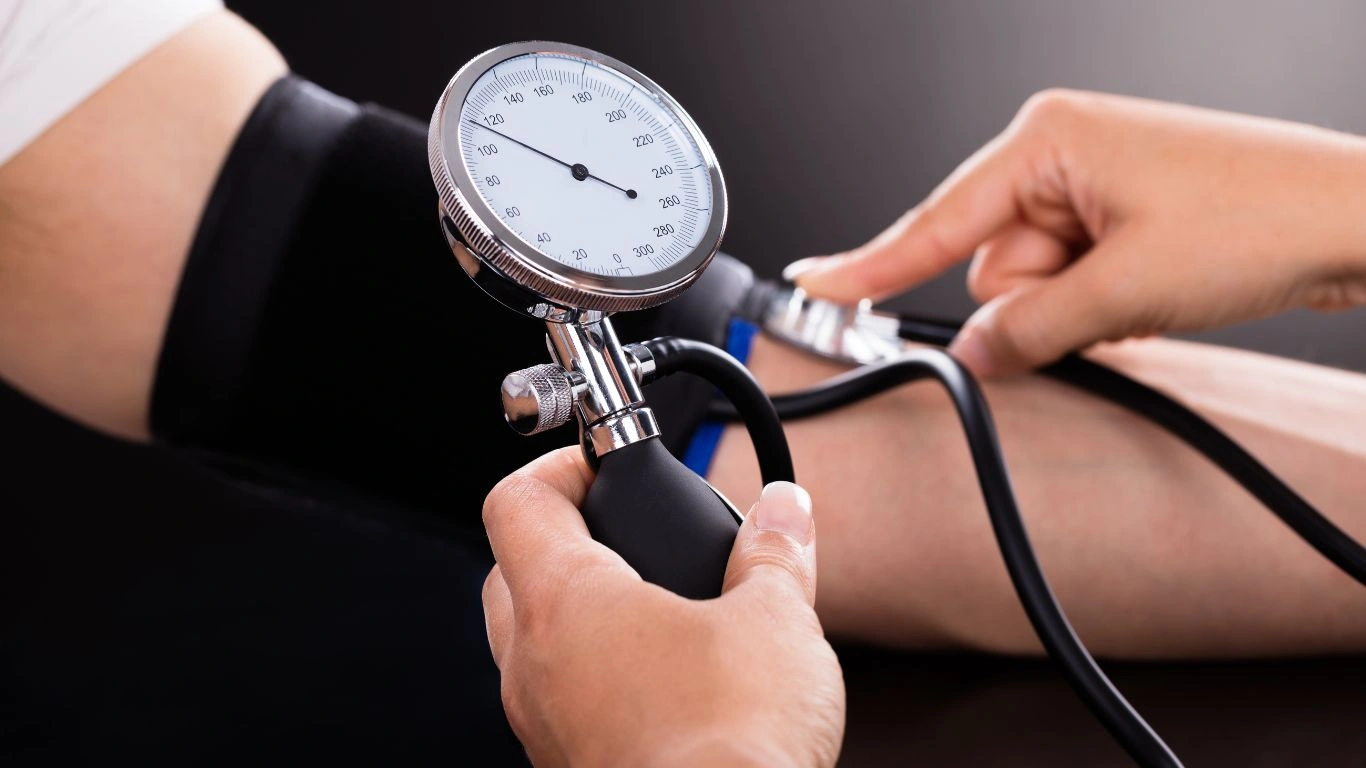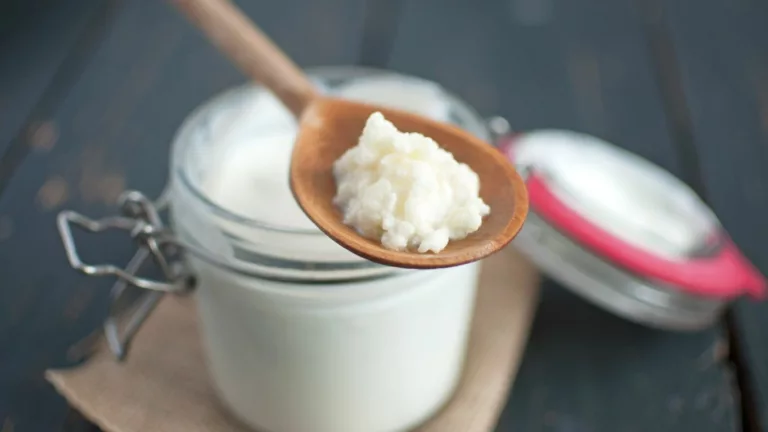Essential Hypertension-Friendly Pantry Staples for Healthy Living
Welcome, friends! If you’re living with hypertension or looking to make better dietary choices to manage your blood pressure, you’ve come to the right place. One of the best ways to take control of your hypertension is by focusing on what’s in your pantry. Yes, that’s right – your pantry holds the key to better health, especially when it comes to hypertension-friendly pantry essentials. As a hypertension expert, I’ve seen firsthand how small changes in our food habits can have a profound impact on blood pressure. So, today, I’ll walk you through some essential pantry staples you can include to help manage your hypertension while still enjoying delicious meals.
Understanding Hypertension-Friendly Pantry Essentials
Managing hypertension doesn’t mean you have to sacrifice taste or convenience. In fact, with the right pantry essentials, you can whip up a variety of meals that are not only tasty but also support heart health. Let’s dive into what makes a pantry item hypertension-friendly and how to make healthier choices when stocking up.
What Makes Pantry Essentials Hypertension-Friendly?
When you’re looking for hypertension-friendly pantry items, there are a few key factors to keep in mind. The most important one is low sodium content. Sodium is a major contributor to high blood pressure, and it’s easy to overlook how much salt hides in everyday pantry staples. When stocking your pantry, always aim for options that are naturally low in sodium or have no added salt. It’s also a great idea to look for items rich in potassium, as potassium can help counteract the effects of sodium on blood pressure.
Another thing to consider is fiber content. Fiber plays a crucial role in managing hypertension because it helps reduce cholesterol levels, stabilize blood sugar, and keep your heart healthy. Plus, foods high in fiber keep you feeling fuller for longer, which can help with weight management—another important aspect of controlling blood pressure.
Essential Hypertension-Friendly Pantry Staples

1. Whole Grains: A Heart-Healthy Staple
When you think about pantry staples for hypertension, whole grains should definitely be at the top of your list. Whole grains like quinoa, brown rice, and oats are rich in fiber and magnesium, which are both essential for heart health. They’re also low in sodium, making them perfect for those managing hypertension.
I personally love making a big batch of brown rice or quinoa at the start of the week. It’s easy to store, and I can use it in so many different meals, from salads to stir-fries to grain bowls. Plus, they’re great sources of complex carbohydrates, which provide sustained energy throughout the day.
2. Canned Beans: Convenient and Nutritious
Canned beans, such as black beans, kidney beans, and chickpeas, are a powerhouse of protein, fiber, and potassium. They’re perfect for creating hearty, hypertension-friendly meals, and they’re incredibly versatile. You can toss them into soups, salads, or even blend them to make creamy dips like hummus.
When choosing canned beans, be sure to look for options labeled “no added salt” or “low sodium.” If you can’t find those, rinse the beans thoroughly before using them to reduce the sodium content. I always keep a few cans in my pantry for a quick and easy meal when I’m in a pinch.
3. Nuts and Seeds: Heart-Healthy Fats
Nuts and seeds are not only packed with healthy fats, but they also contain magnesium, potassium, and antioxidants that are great for heart health. Walnuts, almonds, chia seeds, and flaxseeds are some of my personal favorites for supporting blood pressure regulation.
One of my go-to snacks is a handful of mixed nuts paired with a small piece of dark chocolate (another heart-healthy food). It’s a satisfying and hypertension-friendly option when you’re craving something crunchy and delicious.
Choosing Spices and Herbs for Flavor Without Salt

4. Salt-Free Spice Blends
When it comes to cooking for hypertension, the challenge often lies in flavoring food without relying on salt. Luckily, there’s a world of salt-free spice blends that can elevate your dishes without the sodium overload. Look for blends that feature garlic powder, onion powder, cumin, paprika, oregano, and thyme. These can add depth of flavor without raising your blood pressure.
Another trick I’ve picked up is using fresh herbs like basil, parsley, and cilantro. Not only do they taste amazing, but they also contain antioxidants that promote heart health. Fresh herbs are a great addition to salads, sauces, or even as a garnish on your favorite dishes.
5. Vinegars and Citrus for Zing
If you want to add some zing to your meals without using salt, vinegar and citrus are your best friends. A splash of balsamic vinegar or a squeeze of lemon or lime can bring out the natural flavors of your food and keep things exciting. I love using vinegar-based dressings on salads, and a little lemon zest can really brighten up a savory dish.
Stocking Your Pantry: Tips for Success
Now that you know which hypertension-friendly pantry staples to focus on, it’s time to talk about how to stock your pantry effectively. The key here is to focus on versatility, convenience, and variety. Keep a mix of whole grains, legumes, healthy fats, and spices so you can easily create a variety of heart-healthy meals. And remember, always check labels for sodium content—when in doubt, go for items labeled “low sodium” or “no added salt.”

Incorporating Hypertension-Friendly Pantry Essentials into Your Meals
Now that we’ve gone over the essential hypertension-friendly pantry staples, the next step is integrating them into your daily meals. It’s one thing to stock up on healthy foods, but it’s another to know how to use them in your cooking routine. That’s why I’m here to share some simple yet delicious ways you can incorporate these heart-healthy essentials into your meals, all while maintaining great flavor. Trust me, you don’t need to become a gourmet chef to make hypertension-friendly meals—just a little planning and creativity will do wonders!

6. Breakfast: Start Your Day with Heart Health in Mind
Breakfast is the most important meal of the day, and it’s also one of the easiest times to kickstart your hypertension-friendly eating. Whole grains and nuts are perfect for a nutritious morning meal, so let’s get creative.
Oatmeal is an excellent option for anyone managing high blood pressure. It’s high in fiber and can be easily customized. I love to top mine with a handful of mixed berries (full of antioxidants) and a sprinkle of chia seeds or flaxseeds for that extra heart-healthy boost. If you’re not into oatmeal, try making overnight oats. You can prep them the night before, and they’ll be ready to go in the morning. Add some unsweetened almond milk and your favorite fruit, and you’ve got a quick, healthy breakfast!
Another great breakfast idea is a whole grain toast with avocado and a sprinkle of flaxseeds. Avocados are packed with potassium, which helps balance out sodium in the body, and the flaxseeds provide omega-3 fatty acids that are fantastic for heart health.
7. Lunch: Light, Filling, and Heart-Healthy
Lunch doesn’t have to be complicated to be satisfying. A big part of managing hypertension is finding meals that keep you feeling full without overloading on unhealthy fats or sodium. That’s why I love incorporating beans and legumes into my lunch options. They’re high in fiber, plant-based protein, and potassium—what more could you ask for?
One of my favorite go-to lunches is a simple salad packed with greens, chickpeas, and quinoa. For dressing, I like to use a homemade vinaigrette made with olive oil, lemon, and a dash of mustard. Not only is it fresh and light, but it’s also bursting with nutrients that support heart health. You can even add some roasted sweet potatoes for a heartier meal. Sweet potatoes are full of potassium and are naturally low in sodium, making them perfect for managing hypertension.
If you’re craving something more filling, a whole grain wrap stuffed with hummus, fresh veggies, and a handful of nuts can also make a great lunch. It’s easy to throw together and gives you a satisfying mix of protein, healthy fats, and fiber.
Experimenting with Hypertension-Friendly Dinner Ideas
Dinner is often the time when we have a little more time to get creative with our meals. I always try to make sure my dinner is not only satisfying but also nutritious, especially when managing hypertension. The key is to stick with whole foods and avoid processed ingredients that are high in sodium.
8. Dinner: Simple and Delicious Hypertension-Friendly Recipes
If you’ve been searching for an easy way to make a heart-healthy dinner, look no further than a hearty vegetable and bean stew. This is one of my personal favorite recipes because it’s so easy to throw together, and you can use whatever vegetables you have on hand. Just add your favorite low-sodium vegetable broth, some beans (like kidney beans or black beans), and a mix of root vegetables like carrots and sweet potatoes. Let it simmer until everything is tender, and you’ve got yourself a filling, low-sodium, and fiber-packed meal.
Another dinner idea I absolutely love is a quinoa-stuffed bell pepper. Quinoa is a great base, and you can stuff it with a variety of veggies, beans, and a bit of cheese if you like. It’s a flavorful dish that’s low in sodium and high in potassium. To really take it up a notch, drizzle a little balsamic glaze on top for a sweet and tangy finish.

9. Easy Sides: The Unsung Heroes of Hypertension-Friendly Meals
Sides are often overlooked, but they’re just as important as the main course when it comes to managing hypertension. These are a great way to sneak in more fiber, potassium, and healthy fats. Think roasted vegetables, whole grain salads, or a simple fruit salad for dessert.
One of my go-to sides is roasted Brussels sprouts with olive oil and garlic. Brussels sprouts are a great source of potassium and fiber, and they roast up so nicely. Pair them with a whole grain like farro or barley, and you’ve got yourself a meal that’s not only heart-healthy but also hearty and satisfying.
If you’re looking for a quick and easy side, try a simple sautéed spinach dish with a bit of olive oil and garlic. Spinach is loaded with potassium, and when paired with olive oil, it makes a delicious, hypertension-friendly side that goes with almost anything.
Snacks That Support Your Heart
Let’s not forget about snacks! It’s important to keep your blood sugar levels steady throughout the day, and having healthy snacks on hand is the best way to do that. It’s so easy to reach for a bag of chips or a sugary treat, but instead, try to stock up on heart-healthy options that will keep you satisfied between meals.
10. Heart-Healthy Snack Ideas
My absolute favorite hypertension-friendly snack is a handful of mixed nuts. Walnuts, almonds, and pistachios are great options that are rich in healthy fats and fiber. Just be mindful of portions—while they’re packed with nutrients, they’re also calorie-dense, so a small handful is all you need to keep hunger at bay.
If you’re in the mood for something savory, try air-popped popcorn seasoned with a sprinkle of nutritional yeast or a little paprika for flavor. It’s low in sodium and a good source of fiber, making it a perfect snack for managing hypertension.
For something sweet, fresh fruit is always a great option. I love pairing a small apple with a tablespoon of almond butter for a satisfying snack that’s both heart-healthy and delicious. You get a nice mix of fiber, healthy fats, and natural sweetness without the added sugars found in many processed snacks.
Case Studies & Real-Life Examples
As a hypertension expert, I’ve seen firsthand how making small, intentional changes to your pantry staples can drastically improve your health and wellbeing. I always tell my patients that a holistic approach, including diet adjustments, exercise, and stress management, is essential for managing hypertension. But today, I want to share a few real-life examples of individuals who’ve turned their hypertension around just by focusing on heart-healthy pantry essentials.
Real-Life Story 1: Jane’s Journey to Better Blood Pressure
Jane, a 58-year-old teacher, came to me after her blood pressure readings were consistently high. She was feeling sluggish, stressed, and unsure of how to tackle the issue. After reviewing her diet, we discovered that she was relying on highly processed foods that were loaded with sodium. Jane was also skipping breakfast, which led to overeating later in the day. Together, we worked on her pantry essentials—starting with stocking up on whole grains, legumes, and fresh vegetables. She replaced processed snacks with heart-healthy nuts, seeds, and fruits.
Fast forward three months: Jane’s blood pressure had dropped significantly, and she felt more energized throughout the day. By focusing on hypertension-friendly pantry staples, Jane not only improved her blood pressure but also felt more in control of her health. It was a complete turnaround for her, and she couldn’t have been happier with the results!
Real-Life Story 2: Mark’s Successful Diet Overhaul
Mark, a 45-year-old accountant, had been struggling with hypertension for several years. He had tried several diets in the past, but nothing seemed to stick. He was also a big fan of fast food, which made it hard to maintain healthy habits. After a consultation with me, Mark decided to clean out his pantry and replace his usual snacks with healthier options, like whole wheat crackers, hummus, and low-sodium canned beans.
Over the course of several months, Mark made it a habit to plan his meals ahead of time. He focused on cooking simple, heart-healthy meals at home, like vegetable stir-fries and quinoa bowls. His blood pressure improved steadily, and by the end of six months, he had not only lost weight but had significantly lowered his blood pressure. It’s all about consistency and finding what works for your lifestyle!
Key Takeaways: What You Need to Remember
As we wrap up this article, let’s go over some key takeaways to keep in mind when managing your hypertension with pantry essentials:
- Low sodium is essential: Always check labels for sodium content, and aim for pantry staples that are naturally low in sodium or have no added salt.
- Focus on whole grains: Whole grains like quinoa, brown rice, and oats are packed with fiber, potassium, and magnesium—perfect for heart health.
- Legumes are your friends: Beans, lentils, and chickpeas are rich in fiber, potassium, and protein, making them ideal for hypertension-friendly meals.
- Healthy fats matter: Incorporate heart-healthy fats, like those found in nuts, seeds, and avocados, to support overall heart health.
- Herbs and spices over salt: Experiment with salt-free spice blends, fresh herbs, and citrus to add flavor to your meals without increasing your sodium intake.
- Consistency is key: Small, consistent changes in your pantry and meal planning will lead to significant improvements in your hypertension over time.
By stocking your pantry with hypertension-friendly essentials, you’ll have everything you need to prepare heart-healthy meals that are not only delicious but also supportive of your blood pressure goals.
FAQs
1. What are the best foods for lowering blood pressure?
The best foods for lowering blood pressure are those that are rich in potassium, fiber, and magnesium, such as whole grains, fruits, vegetables, legumes, and heart-healthy fats like those found in nuts and seeds. Reducing sodium intake and focusing on unprocessed, whole foods will also make a big difference.
2. Can I still eat salt if I have high blood pressure?
While you don’t have to completely eliminate salt from your diet, it’s important to reduce your intake if you have high blood pressure. Opt for foods with no added salt, and try using herbs, spices, and citrus to add flavor instead of salt.
3. How long does it take to lower blood pressure with diet changes?
The timeline for seeing improvements in blood pressure varies from person to person. Generally, you may start to see changes in a few weeks to a few months after making consistent dietary changes, such as reducing sodium and increasing potassium-rich foods.
4. What snacks are good for high blood pressure?
Some great snacks for managing high blood pressure include mixed nuts (in moderation), fresh fruit, raw veggies with hummus, and air-popped popcorn. These snacks are low in sodium, high in fiber, and rich in heart-healthy fats.
Bonus: Additional Resources or DIY Tips
If you’re ready to take your hypertension management to the next level, here are a few additional resources and DIY tips to help you get started:
- Meal Planning Apps: Apps like Yummly and MyFitnessPal can help you plan meals that are heart-healthy and hypertension-friendly.
- DIY Herb Garden: Growing your own fresh herbs, such as basil, thyme, and parsley, is a fun and cost-effective way to add flavor to your meals without salt.
- Cookbook Recommendations: Look for cookbooks that focus on heart-healthy eating, like “The DASH Diet for Beginners” or “The Mediterranean Diet Cookbook.”
Appendix: Table, References, Disclaimer, and Call to Action
References:
Disclaimer: The information in this article is for educational purposes only and is not intended to replace professional medical advice. Please consult your healthcare provider before making significant changes to your diet or lifestyle, especially if you have underlying health conditions.
Call to Action: Ready to make your pantry a powerhouse of heart-healthy essentials? Start by cleaning out your pantry today and restock with these hypertension-friendly options. It’s a simple step that can have a lasting impact on your health. Don’t wait—your heart will thank you!

Dr. Gwenna Aazee is a board-certified Internal Medicine Physician with a special focus on hypertension management, chronic disease prevention, and patient education. With years of experience in both clinical practice and medical writing, she’s passionate about turning evidence-based medicine into accessible, actionable advice. Through her work at Healthusias.com, Dr. Aazee empowers readers to take charge of their health with confidence and clarity. Off the clock, she enjoys deep dives into nutrition research, long walks with her rescue pup, and simplifying medical jargon one article at a time.






